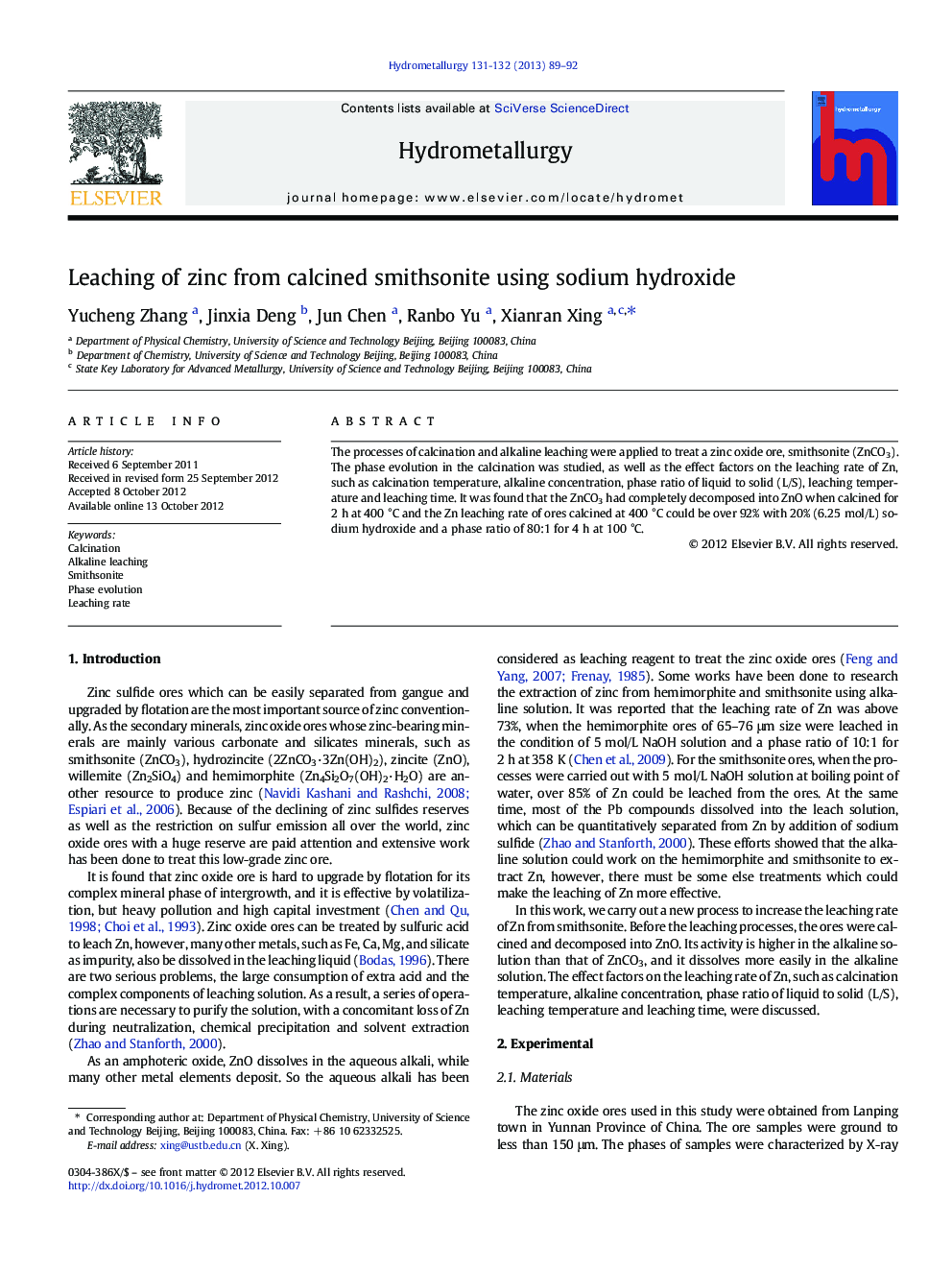| Article ID | Journal | Published Year | Pages | File Type |
|---|---|---|---|---|
| 212443 | Hydrometallurgy | 2013 | 4 Pages |
The processes of calcination and alkaline leaching were applied to treat a zinc oxide ore, smithsonite (ZnCO3). The phase evolution in the calcination was studied, as well as the effect factors on the leaching rate of Zn, such as calcination temperature, alkaline concentration, phase ratio of liquid to solid (L/S), leaching temperature and leaching time. It was found that the ZnCO3 had completely decomposed into ZnO when calcined for 2 h at 400 °C and the Zn leaching rate of ores calcined at 400 °C could be over 92% with 20% (6.25 mol/L) sodium hydroxide and a phase ratio of 80:1 for 4 h at 100 °C.
► Smithsonite ores are calcined to improve the alkaline leaching rate of Zn. ► The products of calcination have a great impact on the leaching rate of Zn. ► ZnO decomposed from ZnCO3 at 400 °C dissolves more efficiently in alkaline solution. ► Both ZnFe2O4 and Ca2ZnSi2O7 formed at higher temperature are undissolvable. ► The leaching rate of Zn could be above 92% at optimum conditions.
